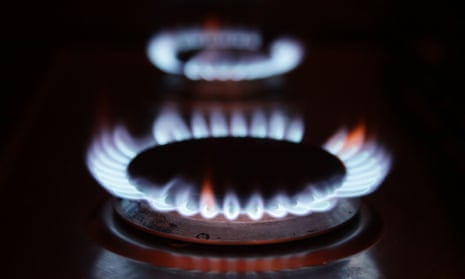National Grid has warned that the UK would not have enough gas to meet public demand on Thursday, as temperatures plummeted and imports were affected by outages.
But the government said households would not notice disruptions to their supply or any increase in energy bills because suppliers, including British Gas, bought energy further ahead. The energy minister Claire Perry said people should cook and use their heating as they would normally.
Q&AWhere does the UK get its gas from?
Show
Britain was self-sufficient in gas from the North Sea until 2004 but declining domestic production means that 60% of the country's gas is now imported. National Grid, which operates Britain’s national energy networks, believes the reliance on imports could reach 93% by 2040. Norway provides nearly two-thirds of UK gas imports via pipelines, while Qatar provided 29% of imports in 2015 via ships carrying liquefied natural gas.
But experts said there was a strong chance that industrial users could experience interruptions to their gas supply.
Within-day wholesale gas prices soared 74% to 200p per therm after the formal deficit warning, which acts as a call to suppliers to bring forward more gas. It is the first time such an alert has been issued since 2010.
By lunchtime on Thursday the price had spiked even higher, hitting a high of 275p per therm at one point.
National Grid’s forecast for the day initially showed a shortfall across the day of 49.5m cubic metres (mcm) below the country’s projected need of 395.7mcm, which would normally be around 300mcm at this time of year. The gas deficit warning aims to fill the gap, which has since narrowed to 16.5mcm.
“We are in communication with industry partners and are closely monitoring the situation,” the company said.
Widespread snow and temperatures of -7.8C due to the “Beast from the East” and Storm Emma have prompted consumers to fire up their heating. Public health authorities recommend an indoor temperature of 18C.
Gas demand is now at a five-year high, according to the market watchers S&P Global Platts. Simon Wood, a gas analyst at the group, said: “There’s a strong chance you’ll see some interruptions for industrial users to balance the system.” Big energy users such as car manufacturers have supply contracts which can be interrupted in return for lower prices.
The situation has been compounded by several supply outages, which can relate to very cold weather. There have been problems with a pipeline to the Netherlands, reductions in gas flows from Norway, and technical issues at facilities in the UK, including at the North Morecambe Barrow terminal.
The crunch is also the UK’s first big energy security test since the country’s biggest gas storage facility was closed by Centrica last year. The Rough site in the North Sea had accounted for 70% of the UK’s gas storage.
The UK is currently drawing on gas stores around the country, and on liquefied natural gas at the Isle of Grain, in Kent, and at Dragon, in South Hook, Wales.
Gas storage is at the lowest level since records began in 2006, primarily because of the closure of Rough. The UK has about 0.7bn cubic metres (bcm) of gas stocks, out of a total capacity of 1.3bcm. That total used to stand at 4.5bcm.
Wood said that ensuring there was enough gas in the next few days would be “touch and go”. Normally, energy demand dips at the weekend but that effect will be limited this Saturday and Sunday because cold temperatures keep more people indoors and bump up household demand.
One analyst said that while this week’s short-term problem had been caused by a “perfect storm” of unrelated issues, the government had failed to take long-term action on gas supplies and cut demand by encouraging energy-efficient homes.
“The UK is largely isolated in its dependency on gas, with a huge over-reliance in the power and heating sectors. Experts have long warned about putting too many eggs in the same basket, with events such as today the undesirable outcome,” said Jonathan Marshall, energy analyst at the ECIU thinktank.
Labour accused the government of failing to plan for the winter by allowing Rough to close, and said it would insulate 4m homes as a priority.
The government is due to meet an alliance of energy intensive industry groups and trade unions after they wrote to the business secretary, Greg Clark, last November demanding an inquiry on gas storage and supply.
“We’ve had the Forties [pipeline] disruption [in December], other events in January and February. We envisage the frequency of these will increase, and this will have impact on gas prices. This requires an inquiry,” said Clive Moffatt, speaking for the group, whose members include ceramics and paper firms.
The shale industry claimed today’s deficit warning demonstrated the UK’s need for “homegrown” gas supplies extracted by fracking.
The jump in gas prices is much higher than the one in December after a large North Sea pipeline was closed for repairs. The high price of gas, which is expected to last for the rest of the week, has also had an impact on electricity supplies, leading to a surge of dirty coal power.
The amount of electricity generated from oil in February was up 81% on January, and over the last seven days more than a fifth of power came from coal, according to MyGridGB.
Power prices, which would usually be around £45-50 per megawatt hour at this time of year, spiked at an astronomical £990 per MWh on Thursday.










